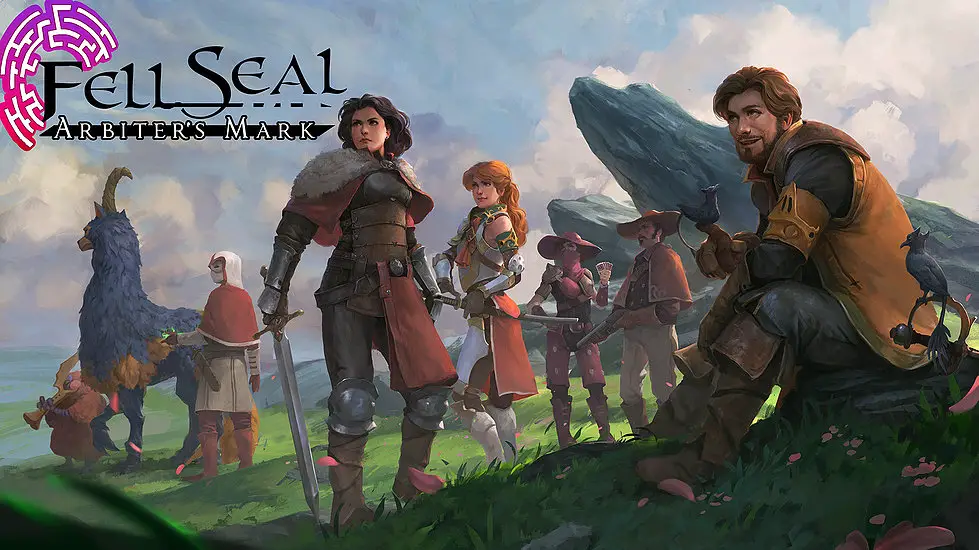Rumors about the absence of strategy games on consoles are greatly exaggerated. Of course, gamepad is not the best device to control many units at once, but if the game is turn-based and army size is not too large then it’s not a very big issue. So you shouldn’t be surprised that such games did exist as far as in 1995 – a year when Tactics Ogre was released on Super Nintendo. And became quite popular, by the way.
A bit of console game history
Actually, Tactics Ogre itself was an Ogre Battle spin-off. And Ogre Battle, in turn, was clearly inspired by King’s Bounty. In those games, you traveled around the global map with your mercenary troops and creatures. And upon meeting enemy armies, you engaged with them in tactical combat.
In TO, however, you couldn’t travel global map freely. Your movement was confined to a story defined route that went through various cities and forts (though there were some “branches” in the story and thus you could choose some turns of the route). And at each location, you had to win a battle, sometimes by completing a certain mission, not just killing all enemies.

The game was also different in a way the army was handled. Most important units were actually the main characters of the story and as the story progressed, they also gained in power and abilities. The story itself, by the way, was quite impressive for a 90-s console game – with drama, intrigues, dark and harsh world George Martin couldn’t hold a candle over.
In 1997, two years after Tactics Ogre, Final Fantasy Tactics was released on Sony’s PlayStation. Both games had quite similar gameplay and for a good reason – the team behind them was the same. In fact, while working on FFT, developers craftily combined their ideas from TO with established Final Fantasy professions system and other stuff.
Fantasy Tactics
The reason for “console strategy games history” bit above is to give you some context about Fell Seal: Arbiter’s Mark. Because it were TO and FFT that inspired 6Eyes Studio. In fact, developers themselves mention those two titles on their site to attract nostalgic fans.
And you know what? Looks like it’s working. Positive comments about the game on Steam almost always include mentioning fond memories of both games that were the basis for Fell Seal: Arbiter’s Mark.

Just like TO and FFT, Fell Seal battles are connected with a single route. There are some “special events” along the line, so you can have a bit more info on the story and lore. And some optional/secret battles too. You can even have additional story character to join your squad if you win.
Battles themselves happen on different types of terrain, that provide various tactical opportunities. You can traverse water tiles only with specific characters, or use some skills to push opponents into the lava. Walls, while not providing cover from ranged weapons and spells, can still be used to stop enemies getting behind you (attack from the sides and rear deal more damage).

Sometimes even objectives vary – destroy all enemies, or leader only, protect specific characters or reach a specific point on the map. There can also be hidden pathways or treasures that require certain abilities to get them. And don’t worry if you fail to open a chest during the battle. After progressing through the story you can always return and “patrol” the area.
“Patrol” is just the “kill all enemies” battle without special restrictions. During it, you can get the secrets you’ve missed. And also grind some money, Experience Points and Ability Points to advance your characters. After all, Fell Seal: Arbiter’s Mark is part jRPG, just like FFT.
Good Job(s)
FS:AM actually uses the system for character progression similar to FFT. During each fight, your troops gain experience and even lvl-up right on the battlefield. And after the battle, each character gets some Ability Points (even characters who haven’t participated in the fight) that are spent on advancing “ability tree” (separate for each character and each class).

You can change your character’s class at any moment between battles. Provided that the said character meets requirements (unlocking other classes, some special items crafted). And in addition, you can add the abilities of other classes you’ve already unlocked. Though, again, with certain restrictions.
For example, you can make gunner (that can use a ranged weapon) with additional knight class skills (focused on protection), so he will become a descent fire support. You can also add two separate passive abilities, that will grant health regeneration or, let’s say, increased critical hit chance. And there is a whole range of “retaliation skills” from making your attacker “mute” to completely evading physical or magical attacks.
Of course, since you can have only one type of “counter”, two passives and skills from only one class (in addition everything to the main class that is), there is no way to create universal invincible killing machine. But with six-seven units in the field, you can imagine how many possibilities such a fluid system can offer.

Though, I must admit, unlocking new classes can feel a bit tedious. You have to fight with specific characters using specific abilities to maximize AP for particular classes. Also, on changing character’s class, you must equip him or her with new gear and weapons. Luckily money is usually in abundance and you can buy not only weapons to maximize damage but also items that grant special protection or passive skills (like flippers allow all characters to swim).
The Dark Side
Ok, let’s get this over with. The main plot about corruption in the Council of Immortals (rulers of the world who rose to power after defeating some apocalyptic monstrosity) is totally generic and checks with every cliche in a book. There is only one guy that doesn’t fit into the picture, but he appears out of nowhere, also a cliche <spoiler> and eventually doesn’t mean much in the grand scheme of things.
Speaking of characters. All of them are one, at best two-dimensional. Villains are mostly too stupid to hide and do evil things just for the sake of it. Protagonists are not really much better.

Kayrie is an honest and just Arbiter (folks whose job is to keep peace on behalf of Immortals) who discovers corruption during the course of the game. Anadyne is an honest and just Arbiter-in-training under Kayrie. And Reiner is honest and just, well you get the picture. Though he is probably the most interesting character since Kayrie is his adoptive sister and he also has some grudge against Yates (healer/necromancer who joins the party a bit later). But even those relations don’t lead to anything interesting. In fact, when I’ve learned what that feud with Yates was all about, I was quite disappointed, so far-fetched it was.
Though it’s hard to tell what fits the world of Teora and what doesn’t, for the lore itself is barely explained. Like, here is the continent populated by humans, in the north live insectoid-like Bzil (one of them will join the party after the optional mission), on some volcanic island to the south-west live Ewoks Kawa. That’s all.
I kinda understand that first Final Fantasy games didn’t have most deep plot either. But at least they were relatively lighthearted and didn’t have a lot of dialogues that would chew and spoonfeed you about justice, doing-the-right-thing and whatnot. Like the ones Arbiter’s Mark has and presents with the most serious fashion. And a few jokes (that are mostly made by Reiner) are not exactly the funniest material.
Another problem of Fell Seal, though not as serious as bad writing, is a bit inconvenient interface. When battlefield has uneven landscape it’s often hard to figure out range between tiles (sometimes you can’t even see adjacent tiles), which is essential for understanding if you can get close enough to an enemy for an attack.
Also, buffs and other statuses are shown through small icons and until you memorize them you will have to look up their meaning in a somewhat clunky way (though it is explained in one part of the tutorial and in general interface was much improved during Early Access). Though, again, it’s more of a thing you have to get used to, not a major problem.
Ultimate Choice
Despite my misgivings, I still wouldn’t call Fell Seal: Arbiter’s Mark a bad game. In fact, I would additionally like to praise its visuals, that are not some shoddy pixel graphics, but hi-res 2d-sprites. And artists still crafted them to remind of Final Fantasy style of the 90-s.
Ultimately, a choice to buy the game or not depends on your priorities. If you wanted a dramatic and deep story, with memorable characters that jRPGs are known for – sorry, wrong game. And don’t expect some original world either.
But if you’re in for turn-based tactics, where you use crafty combos and tricky maneuvers to accomplish your mission – Fell Seal: Arbiter’s Mark will provide it in abundance. In addition, it allows very fine tuning of difficulty.








1 thought on “Fell Seal: Arbiter’s Mark – Review”